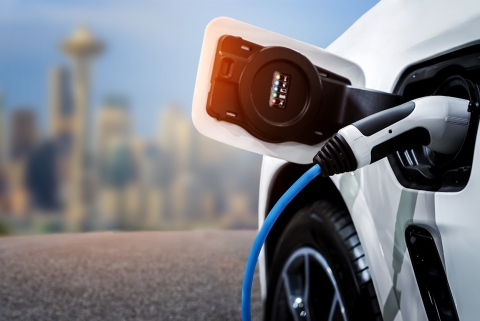The Washington State Department of Commerce partnered with the Center for Sustainable Energy (CSE) to implement an electric vehicle (EV) charger incentive program for communities across the state.
The Washington Electric Vehicle Charging Program (WAEVCP) funded over $98 million in rebates to install publicly accessible Level 2 and DC fast chargers in rural and urban locations, targeting multifamily housing, tribal communities, schools, government facilities and fleet depots.
The program prioritized reducing geographic and income inequalities in EV charging accessibility, with a goal to direct 40% of program funding toward installations in overburdened and vulnerable communities.
CSE advised on initial program design and incentive structure and continued assisting with eligibility requirements, environmental justice objectives, website development, technical assistance and application review. Project partners helped with program outreach and education.
For program statistics, visit WAEVCP Funding Dashboard.

Washington Electric Vehicle Charging Program Impacts
Over 5,300 new chargers funded at multifamily housing, public charging sites, fleet depots and workplaces
Funds awarded in 36 of 39 Washington counties
Over $98 million in grants awarded
Program at a Glance
Program Goals
Deploy EV charging infrastructure throughout Washington to reduce emissions, improve air quality and promote equitable access to electric vehicle charging infrastructure.
CSE's Role
Program design
Project management
Reporting and coordination
Technology and knowledge transfer
Outreach and technical assistance
Technologies
Key Partners
Washington State Department of Commerce
Cyan Strategies
Energy Northwest
Western Washington Clean Cities Coalition
STRUO Strategies
The Whitener Group
State Policies Supported
Washington Environmental Justice Law (Healthy Environment for All Act)
Washington Growth Management Act
Impact Statement
WAEVCP accelerated EV adoption in Washington by funding 20% of the state’s projected need for public DC fast chargers. Another notable achievement is that over 44% of funding supported charger installations in overburdened communities. More than 3,000 Level 2 ports were built at multifamily housing developments.

